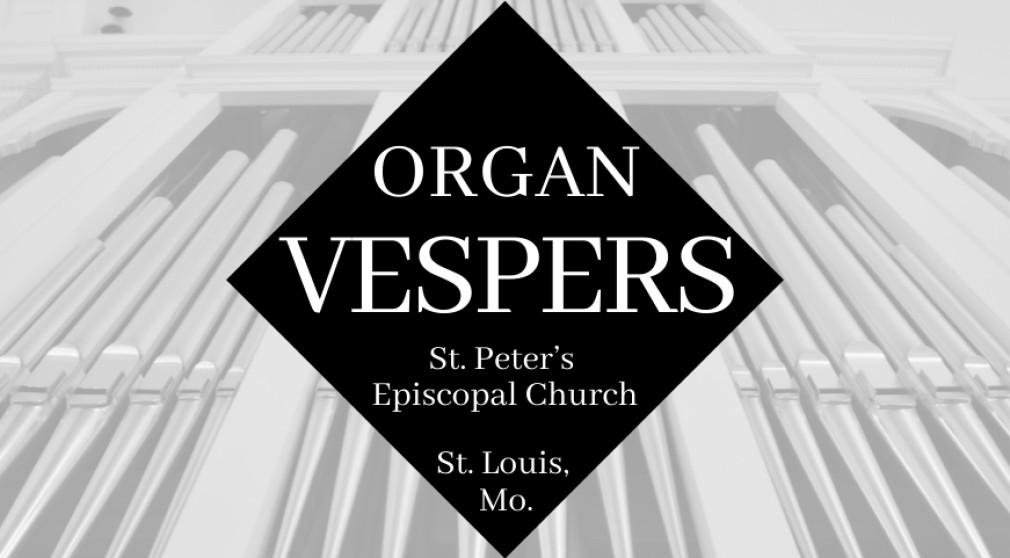A Personal Note: The St. Peter’s Organ and the Pandemic

By David Sinden
Organist & Director of Music
Twenty years ago, right at the very same time that the St. Peter’s organ was being installed, I was fortunate to go on a tour of Germany with the Houston Bach Choir and see many historic organs in that country. It was my first trip to Germany, and the church architecture and the sounds of the instruments I heard and played there were astonishing. But recently, I’ve been reflecting on one detail of that trip in particular: seeing the mouths of organ pipes.
The mouth of the organ pipe is the visible gap in the front of the pipe. This is where the column of air is set into motion; it’s where the “whistle” happens in the pipe if you like. On at least one of these historic organs, the area surrounding the mouths had been decorated to become a human face: there were eyes, a nose, some hair, and it made the mouth look like, well, a mouth! It said something about how Germans (including J. S. Bach) thought about their organs some 500 years ago: organs themselves have a voice and are meant to sing just as much as people are.
The Mander organ at St. Peter’s Church has served us very well these past twenty years, especially lately. With human respiration under continued scrutiny, the organ has been able to fill our parish with music throughout the pandemic.
Organs are “Covid-safe.” Igor Stravinsky once condemned the organ as inherently unmusical by saying, “the monster never breathes.” He’s right, of course. When we switch on the organ, its reservoirs fill up with air, but none of us has to worry about getting “breathed on” whenever the organ plays.
When the St. Peter’s staff was permitted back in the building in June 2020, I leaped at the chance to play the organ. Finally, there was a way to resume serving in my role as organist. To play the organ and share its music, both in-person and mediated through electronic broadcasts and recordings, was something that I needed at that time. I hope that some of those sounds were able to comfort you in those difficult times of separation.
My relationship with our fine instrument has changed in the last two years. Having to go several months without it, I have come to appreciate anew all the many things that this splendid organ can do.
This summer, I hosted a colleague passing through St. Louis who wanted to hear and play our Mander organ. After I demonstrated it for him, we traded places, and he took the organ bench. As I made the short walk away from the organ console and into our beloved parish church, I was struck by the fact that I had not heard the organ from that vantage point in over a year.
I could once more hear the organ the way the organ builders from Mander intended. It spoke beautifully, clearly into the room. Indeed, it sang. And after playing it for months on end, having the opportunity to hear the sound bloom all along the church was revelatory.
Our organ truly is remarkable, not only for its relatively large size but for its successful design. When it was built, Choir and Organ magazine proclaimed:
Both with and without reeds its ensemble is well balanced – not only between top and bottom, but also in the middle, where many organs fail. It fills the room with a glorious sound, and manages at the same time to be both beautiful and impressive.
It’s no secret that organ builders the world over are enjoying a kind of “golden age.” Our Mander organ, as with so many others of recent vintage, combines the best of historical organ building principles with modern construction and an eclectic tonal design that allows for the successful performance of music from all periods. The Mander organ at St. Peter’s speaks many different musical languages convincingly. It “sings” music of almost all styles well!
Our Mander organ, now twenty years old, is a gift to this parish in every sense. And gifts, by nature, want to be shared. I hope that our new Organ Vespers services this season will be a way of sharing what a gift this organ is, both to this parish and to the wider community. The first Organ Vespers will be held on Sunday, September 26 at 5:00 p.m. Additional Organ Vespers services will be held throughout the year.
I’m excited about hearing the organ played by several other distinguished organists this season. Their expertise and varying repertoire will be another gift we will enjoy this year.
Vespers is a service of light in the darkness, and the radiance and beauty of our Mander organ will accompany that liturgy beautifully.
So if you hear our organ every week or haven’t taken the time to listen to it closely since its dedication 20 years ago, I invite you to listen anew to our organ. Even as the pandemic continues, there are nearly 3,000 unmasked mouths ready to sing out in prayer and praise.

